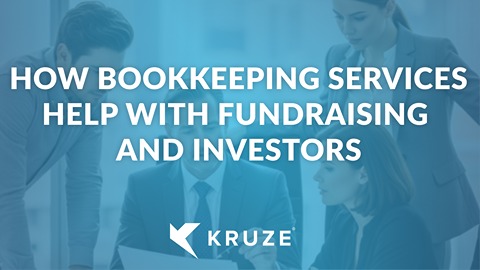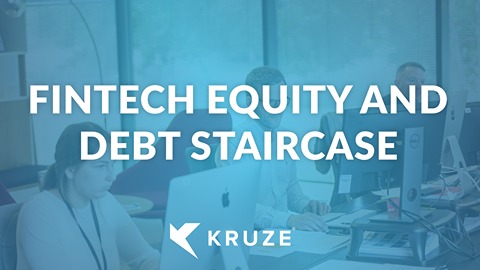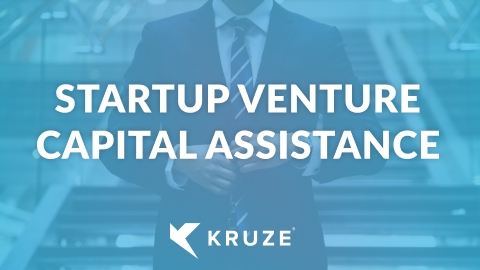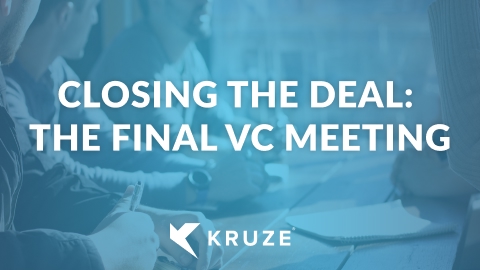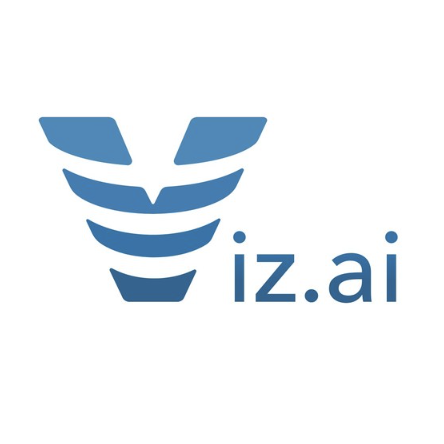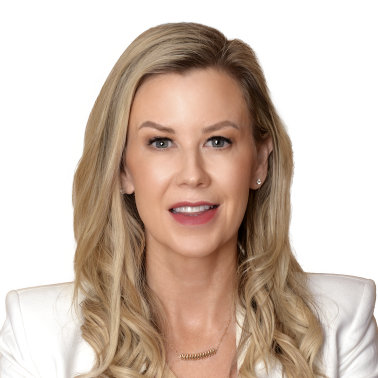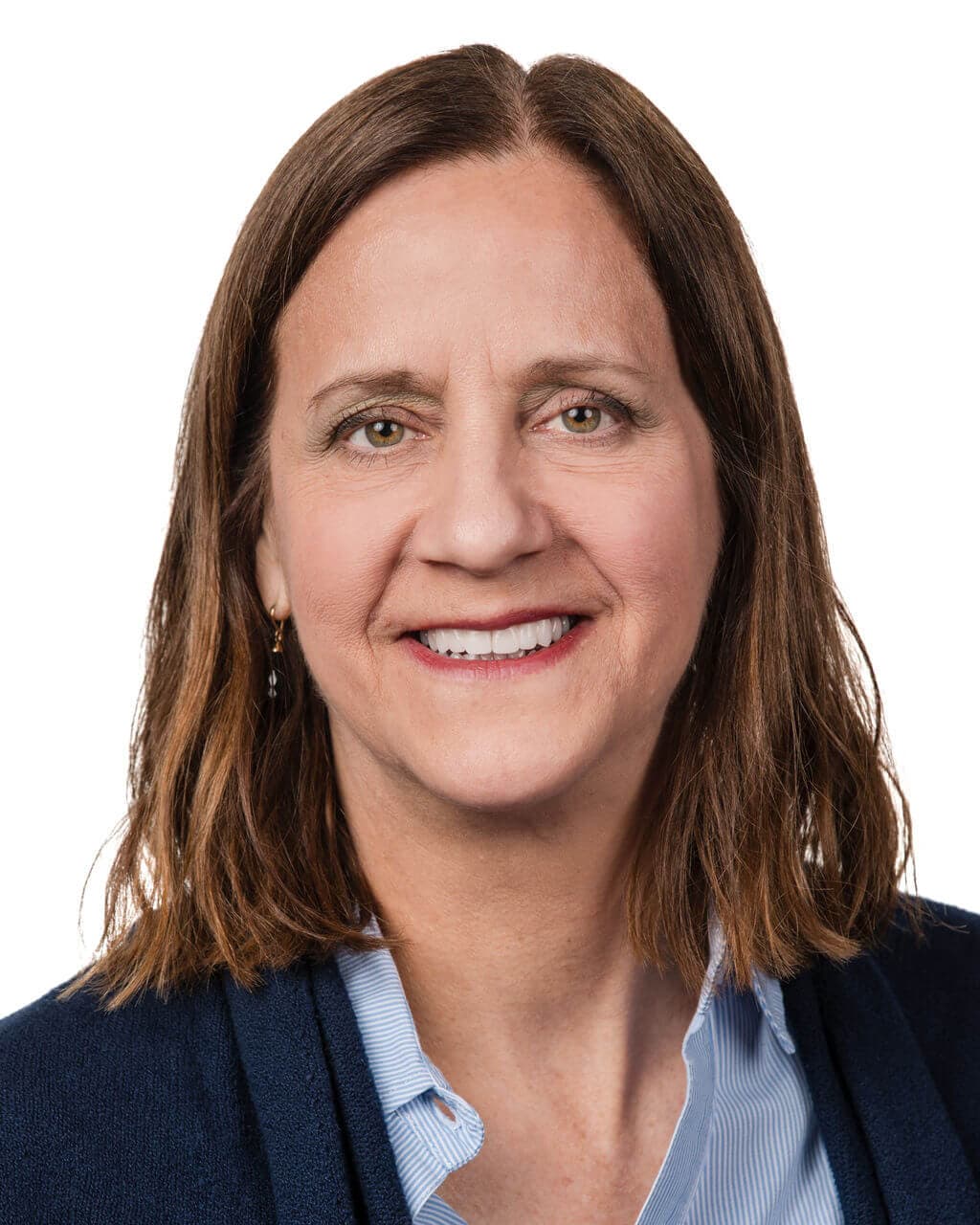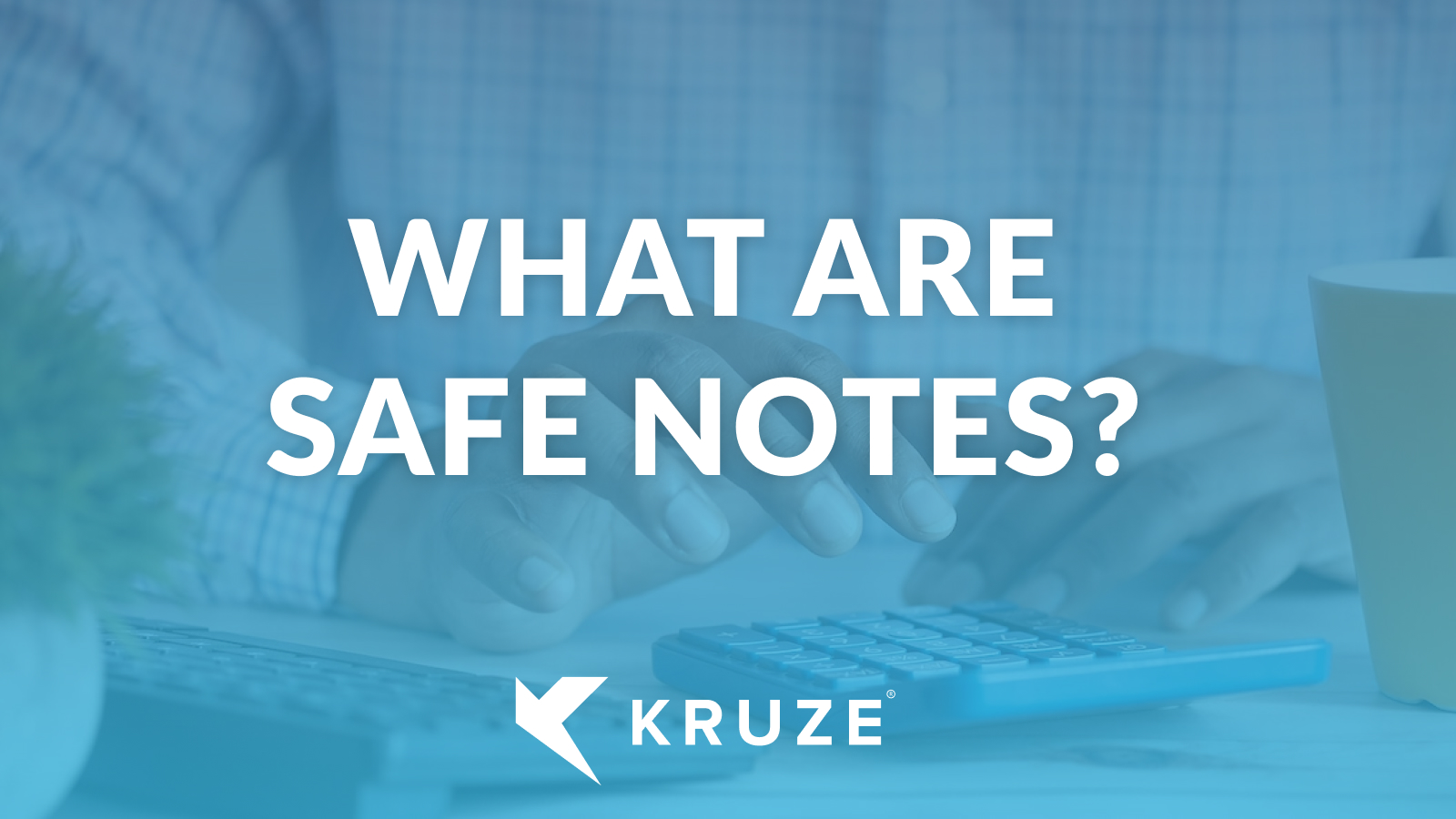
SAFE notes are a very attractive alternative for early-stage startups to raise funding.
SAFE (simple agreement for future equity) gives investors the right to buy equity in a startup at a future date when the startup has another round of fundraising. SAFE notes were created in 2013 and are rapidly increasing in popularity because they’re easy to issue and give startups access to funds quickly.
You’re SAFE with Kruze
Kruze Consulting clients have raised billions of dollars of funding using SAFE notes, and our experienced accounting team understands SAFE notes. We can help you learn how SAFE notes affect your balance sheet, think through your cap table and the relationship between SAFE notes and your taxes. Let’s take a look at this important funding option.
What are SAFE notes?
SAFE notes are a simple, easy and fast form of financing, invented by Y Combinator in 2013. The majority of angel, pre-seed and seed rounds are now done through SAFEs (vs. convertible debt). SAFE notes are designed to be more founder-friendly, offering a more streamlined and simplified process. They are easy to document, generate smaller legal fees, and can be quickly executed. This makes them an attractive option for startups looking for a hassle-free and affordable way to raise capital.
In addition to those benefits, SAFE notes have two major differences from convertible debt:
- No interest rate. Convertible debt typically has a small interest rate, maybe two to four percent. Over time, through compounding, owners of convertible debt would get a larger share of the startup’s equity. Founders were giving up a larger portion of the company.
- No maturity date. Convertible debt has a maturity date, for example 24 months. And while many investors would roll over or extend the convertible debt, a maturity date could be used by some investors to complicate the startup’s life cycle.
While SAFE notes don’t have a maturity date, they do have a valuation cap that’s negotiated between the investors and the founder. Essentially, the cap sets a limit on the price at which the notes convert to equity when the startup has another round of funding, providing an incentive for early investors, since they will get a much lower valuation and therefore a larger ownership share.
A common example would have a SAFE note being at a $5-10 million cap. And the next funding round, like the series A, may come in at a $20-25 million valuation. You can see there’s a really big valuation delta there, and the seed and angel investors who invested in that SAFE note got the benefit of that much lower valuation. Therefore they get more ownership for the money they put in because their valuation is so much lower. That’s a really big point: SAFE notes are effectively equity.
There are also instances where founders are able to negotiate uncapped rounds. These aren’t popular with investors because if the company’s valuation is increasing using the SAFE investors’ money, the investors don’t get rewarded. But some investors will do uncapped notes.
In recent years, there have been some extra provisions put in some SAFE notes, which basically say, “The investors get paid back first.” When SAFE notes first came out, they didn’t have that. That’s why we always thought of it as equity. If it has that provision, it starts becoming more like debt. It’s a fine distinction, but we typically book SAFE notes as equity, whereas convertible debt would be debt.
In general, remember that SAFE notes are a more friendly version of convertible debt. They’re very fast. They’re quick. They’re inexpensive to document.
One caveat: You can get into a little bit of trouble if you start stacking SAFE notes because the interplay on dilution can get a little complicated. We typically recommend one or two rounds of SAFE notes and then do a conversion to preferred and common stock, and clean up your cap table. If you have questions on using SAFE notes, contact us.
How does a discount work on a SAFE?
While most SAFE notes have an implied valuation, in the form of the valuation cap, there is often a discount rate that can come into play if the company raises money below the valuation cap.
If the next round is done at below the cap, then the Seed investors usually get a discount of 15% to 20% for being early investors. But everyone is hoping the valuation is much higher for the next round.
For example, assume a company raises $3M on a $15M cap. Then, later, they raise their Series A round (this will be preferred stock with a stock price and valuation). If the pre-money valuation is only $10M, then it is below the SAFE note’s valuation cap. So the investors, instead of taking the $15M cap valuation, get to come in at $10M times one minus the discount.
So if it’s a 20% discount, their valuation will be $8M instead of the cap valuation of $15M.

The discount is basically an insurance policy for investors so that they get a little more if the valuation cap was too aggressive.
Negotiation Tip
Professional SAFE investors want pro rata rights
Professional seed and pre-seed investors, who are very familiar with SAFE note investing, are consider pro rata rights a very, very important right, and will negotiate aggressively to get them.
Why Early Investors Care About Pro Rata Rights
Pro rata rights allow these investors to maintain their ownership percentage in a startup by investing additional capital in future financing rounds. Basically, they get the right to keep investing in subsequent rounds if they want to keep owning the same amount of the business. This is crucial because, in the world of startups, as companies grow and take on more investment, the ownership pie gets more and more diluted.
By having pro rata rights, SAFE investors get the chance to keep their slice of the pie intact, even as more investors come on board. Investors want to own as much of their early-stage investments as they can; if the startup proves to be successful, these investors can avoid the dilution of their ownership and can continue to be a part of the company’s success story.
For very early investors, it’s not just about avoiding dilution; it’s also about being able to put more into the best companies. When investors spot a startup that’s on the track to success, they naturally want to increase their investment in that company. Having pro rata rights gives them the flexibility to double down on their winning bets, allowing them to inject more capital and reap the rewards of the startup’s growth and success. In essence, pro rata rights are like a safety net, ensuring that SAFE investors can maximize their gains and continue supporting promising startups on their journey to success.
How Founders Can Use Pro Rata Rights When Negotiating SAFEs
It’s common for larger SAFE investors to ask for pro rata rights. Well, actually, pretty much any sophisticated investors will ask for them, but you, as a founder, need to be careful who you give these to, as they crowd out the amount investors in subsequent rounds can invest and own.
Founders should use pro rata rights to
- Get bigger checks - offer pro rata to investors who put in over a particular amount. We often see this cut off at $250,000 for seed and pre-seed stage deals, although $100,000 is another breakpoint.
- Play with caps and discounts - if you have a lead investor, you may be able to improve the discount or valuation cap by offering pro rata rights. It’s another financial negotiating point you can use during your negotiations around valuation.
Pre vs post-money SAFES
There are two major types of SAFEs, pre-money and post-money; ~85% of SAFEs in the us are post-money. The main differences between pre-money and post-money SAFEs are the way they handle valuation caps and conversion calculations. In a pre-money, the valuation cap is applied before new money is added, while in a post-money, the cap includes the new funding, leading to different ownership percentages for investors upon conversion. These are NOT the same, and founders need to be very aware of which one they are selling to their investors. In general, investors prefer the post-money version they typically result in investors receiving more ownership compared to pre-money. This is because, all else being equal, because the valuation cap in the post-money version includes the new funding, effectively giving investors a larger slice of the company’s equity upon conversion.
SAFE and balance sheet
SAFE notes are classified as equity on the balance sheet until conversion – learn about how to account for SAFE notes.
Impact of SAFE notes on future fundraising rounds
When considering the use of SAFE notes in early-stage financing, founders should think about how they may influence the next round. SAFE notes offer a streamlined and founder-friendly approach to raising capital, but they also come with certain considerations that startups need to be aware of when planning their long-term fundraising strategy.
Possible SAFE impacts on the next round
- Valuation Caps: SAFE notes often include a valuation cap, which can influence the valuation in future funding rounds. While a cap can be advantageous for early investors, it may set a precedent for future valuations, potentially affecting negotiations with new investors. The next investors may say “hey, let’s just fund at this cap, you’ve already thought about the valuation, so we can go with that.”
- Complexity in Valuation with Multiple SAFEs at Different Discounts: Issuing multiple notes with varying discount rates adds significant complexity to valuation and cap table management. Each SAFE introduces a different potential conversion outcome, making it challenging to predict the company’s valuation at future funding rounds and to assess the cumulative dilution impact on founders and existing investors. This complexity necessitates sophisticated financial modeling and careful consideration of how these varying terms might influence negotiations with future investors.
- Negotiating Challenges with Pro Rata Rights in SAFEs: Granting pro rata rights or other favorable terms to SAFE note holders can set precedents that future preferred stock investors may expect or demand - even the smaller preferred share investors. If these terms are seen as overly generous or potentially dilutive, new investors might insist on similar or more favorable conditions. Alternatively, they may push for the removal or modification of these terms, leading to difficult renegotiations with original investors. This situation can create tension and necessitate delivering potentially unwelcome news to early supporters, complicating investor relations and potentially impacting future funding dynamics.
- Founder Equity Preservation: The cumulative effect of multiple SAFE rounds on founder equity should be carefully considered. Founders need to ensure that their equity stake remains sufficient to maintain control and motivation, especially when facing new investment terms in subsequent rounds.
What happens to SAFE notes when a startup is acquired?
A good acquisition is a happy moment for founders and investors. That’s the reason people invest in startups. But how does an acquisition affect SAFE notes?
A SAFE note is a security that is going to convert to stock at a future point, usually at a pre-negotiated price cap. Let’s look at an example. A person might invest in a SAFE note with a $10 million cap.
If the company is bought for $100 million, that’s great news. Provided there is no other money, the investor will get a 10X return on their investment. The SAFE note will convert to common equity and they get to participate in the upside of the acquisition.
But what if the company is acquired for a lower dollar amount? To extend the example, an investor may have a $2 million investment in a SAFE note with a $10 million cap. But the company was bought for $2 million. In that situation, the SAFE note will act like debt and the investor gets paid back first, and that’s true for the majority of SAFE notes. It mitigates losses for investors. Some investors may choose to share some of those funds with founders to encourage them to follow through with acquisition.
So as a quick rule of thumb, in a really great high outcome acquisition, the SAFE notes are going to convert to common at the negotiated convert prices, and investors are going to participate in the upside of the acquisition. With a downside acquisition, you’re going to get at least some of your money back.
Would A SAFE Note Be Entered Under Opening Balance Equity?
One of our YouTube channel viewers asked if a SAFE note would be recorded under opening balance equity? And the answer is “not really.” So let’s look at why that is.
A “Simple Agreement for Future Equity” note is a way that startups can raise capital. The SAFE note is a legally binding agreement that allows an investor to buy shares at some point in the future, usually when the startup has a subsequent funding round, and usually at a valuation less than a particular amount (the valuation cap) or at a discount to the price of the subsequent funding round (the discount percentage) or at the same price as other investors in the subsequent round (no discount, or below the cap).
Opening balance equity is an account that’s usually created automatically by accounting software like QuickBooks to offset opening balance transactions. It’s only meant to be temporary. The basic balance sheet equation is Assets = Liabilities + Equity. Opening balance equity is generated to offset any asset accounts, to make the balance sheet actually balance. It should eventually disappear once the proper journal entries are made by your startup accountant. If your opening balance equity isn’t cleared, it normally indicates an error in your accounting.
SAFE Note Accounting
Since the opening balance equity is only temporary, SAFE notes shouldn’t be included in it. While there’s a debate about how to classify SAFE notes (read more about it here), at Kruze Consulting, we record SAFE notes as a line item in equity. When the SAFE notes convert to preferred or common equity, we move them to equity and there’s no longer a SAFE note line item.
So opening balance equity is just a temporary “filler” that accounting software like QuickBooks creates to keep a balance sheet balanced, and it’s not intended to be a permanent entry. In fact, it usually indicates a mistake or problem. So you shouldn’t record SAFE notes there. If you have other questions about SAFE notes or startup accounting, please let us know.
Does a SAFE note conversion trigger capital gains?
SAFE notes convert into equity when a startup reaches a conversion event such as a new round of financing, acquisition, or IPO. Conversion of a SAFE note is viewed as a change in ownership by tax law, but does not trigger capital gains tax unless the stock is sold. Exceptions may apply, so it’s recommended to consult a tax accountant and startup lawyer to minimize tax exposure.
Pros and Cons of SAFE Notes
While they offer several advantages, it’s essential to consider their potential drawbacks as well. Here’s a balanced look at the pros and cons of using SAFE notes.
Pros of SAFE Notes
- Pushing the Valuation Determination Down the Road: Deferring the valuation decision is beneficial in the early stages of a startup, where determining a fair and accurate valuation can be challenging. This flexibility allows founders to focus on growth and development without the pressure of justifying their company’s worth to investors. It’s particularly advantageous when a startup’s potential is promising but not yet quantifiable, offering the opportunity to prove its value before a formal valuation is set.
- Simplicity and Speed: SAFE notes are relatively straightforward and quick to execute, making them an efficient way to raise funds without the complexities of traditional equity rounds.
- Cost-Effective: They typically incur lower legal fees than other financing methods, making them a cost-effective choice for startups. This is a very big advantage; startups can save tens of thousands of dollars of legal bills.
- Founder-Friendly Terms: SAFE notes often lack elements like interest rates and maturity dates, which can be advantageous for founders, as they don’t have to worry about debt repayments or refinancing.
- Less Dilution Upfront: Since they convert into equity at a later date, founders avoid immediate dilution of their ownership stake. But, the best founders, even if they sell their business while still having notes outstanding, try to make the investors whole.
Cons of SAFE Notes
- Deferring the Valuation: Ok, so while it’s great to not have to fix the valuation, this is something that eventually has to happen, so kicking the can down the road can still create issues later when a price round happens.
- Potential for Excessive Dilution: When SAFE notes convert, especially if multiple rounds have been issued, founders may face significant dilution of their equity. We’ve worked with a number of founders who ended up pretty surprised at how much of their company they sold and how little they actually own. If this number gets too low, VCs may not want to invest because they may be afraid the founder won’t have enough skin in the game to justify staying committed.
- Complex Cap Table Management: Managing a cap table becomes more complicated with multiple SAFEs, particularly if they have different terms and discounts.
- Potential Conflicts with Investors: Differences in terms and conditions among various SAFE holders can lead to conflicts, especially during exit events or conversion scenarios.
- Limited Investor Protections: Unlike traditional equity, SAFE notes often offer fewer protections for investors, which might deter some types of investors.
- Uncertainty in Exit Scenarios: In acquisition or down-round scenarios, the conversion terms of SAFE notes can lead to uncertainty and complications, affecting both founders and investors.
In conclusion, while they are a flexible and founder-friendly financing tool, they come with complexities and potential drawbacks that startups must carefully consider. Balancing these pros and cons in the context of a startup’s specific situation and long-term strategy is crucial for making informed financing decisions.
Tips for Founders Raising SAFEs
- Fully understand the terms of SAFE notes, including valuation caps, discounts, pro rata rights, and conversion triggers.
- Set realistic valuation caps that are justifiable and in line with market norms to avoid complications in future funding rounds.
- Be prepared for potentially challenging negotiations in later rounds due to deferred valuation decisions.
- Be aware of how multiple SAFEs can dilute your equity.
- Regularly update and review your cap table, especially after each round of SAFE notes, to keep track of potential ownership changes.
- Use a great lawyer who has worked with many startups - strange terms could sink your next round.
- Be prepared for future investors to request similar or more favorable terms than those in your notes.
- If you’ve offered favorable terms to SAFE investors, be ready to renegotiate these terms if you raise from a top tier VC, who may ask you to reset the original investors to something more market-rate.
- Recognize how SAFE notes convert and affect payouts in various exit scenarios, including acquisitions or down-rounds.
- Get you head around the different levels of dilution you will experience at different valuations and round sizes for your next round.
- Don’t get cute and raise a bunch of different SAFEs with different terms; and mixing and matching convertible debt as well can be even more confusing.
- Raise enough capital to hit the milestones needed for your next round of funding, ensuring that you don’t fall short and face financial challenges.
Key Dates for Startups with SAFE Notes
-
Review year-end bank and cash balances and compare to projections
-
Update cash out projection based on current cash and recent burn
-
Check progress on quarterly goals
-
Review all 90+ day aged receivables and consider writing off any uncollectible accounts
-
Review key metrics and KPIs
-
Schedule board meetings for the year
-
Review general ledger for SaaS renewals and recurring expenses
-
Review monthly financial statements
-
Federal Quarterly Estimated Tax 4th installment (fourth quarter 2025).
